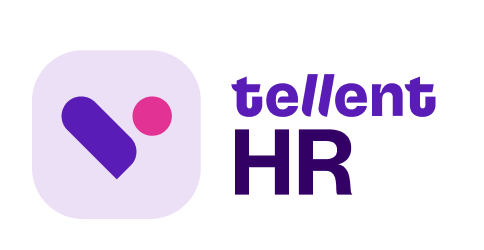Have you ever tried hiring for 16 different brands at the same time? That’s the challenge the recruiters of Makerstreet, an Amsterdam collective of agencies, are taking up every day.
Makerstreet describes itself as a “network” of 16 agencies with more than 350 people. Their approach is very unique: each of their agencies has its own “specialty.” Noun, for example, is an interim agency with a focus on agile profiles. Touchtribe creates state-of-the-art websites and webshops, while Mr. Koreander excels in communication strategy. The 16 agencies (or “labels”) interact to provide clients with the best service for their needs.
This model creates interesting challenges for the Makerstreet executives. For example, how to streamline processes across different agencies and brands?
To come up with an answer, we interviewed Nienja Blom, an in-house Recruiter at Makerstreet. She gave us fascinating insights on how to overcome unique problems and bring efficiency to complex processes.
Why Makerstreet needed an ATS
No earlier than two years ago, every Makerstreet agency was in charge of its recruitment. That meant different tools, approaches, and processes for each of its labels. This way of working can have its advantages. But for the network, it mostly amounted to a lack of scalability, lost profits due to external agencies, and no sharing of information or candidates between the labels. As the business grew, it became evident that they needed a new method.
When Nienja, then interim Recruiter at one of the agencies, was promoted to in-house Recruiter for Makerstreet, one of her first missions was to centralize everything. To centralize complex processes, you need powerful tools. Some labels were already using an ATS. So Nienja started researching which solution would be the most appropriate to unify all the brands and decided on Recruitee.
In her words, that was the platform that offered “the most control over the whole process.” Control is indeed crucial to being able to manage the hiring of 16 different brands.
“With Recruitee, we can really ‘put things into boxes.’ We can create processes for the different labels and make sure everyone only see what’s relevant for them.”
Nienja Blom
In-House Recruiter
Migration and onboarding
Once the team chose their tool, then came the time to migrate all the data. It required a lot of effort, but thanks to Recruitee’s data migration service and the help of a few Makerstreet developers, they were able to make the migration a success.
The team successfully set up careers pages for all the different labels. They first created a template to set a foundation for the rest of the brands to follow. Thus, every agency could have its unique branding on its page.
Makerstreet’s setup in Recruitee is to classify each agency as a department in the Company account. Then, they use an API to link every department to its own careers page.
How Makerstreet uses Recruitee to hire collaboratively
Nienja now works with a team of 4 in-house recruiters. Recruitee enabled them to be in charge of the hiring process across all the labels. The team sets up workflows, talent pools, and automated messages to send out to candidates.
“The nice thing is that we can create a template and duplicate it as many times as we want.”
Templates allowed them to have the same core processes but duplicate and tweak them for every label. Talent pools and the Referrals Hub also helped them to share more information and candidates between the agencies.
Nienja spends a lot of time creating recruitment roles or adjusting visibility settings in Recruitee. That way, “every label has only access to its own environment.” With the workflow templates, they can all easily create pipelines, automated emails, or screening questions. This approach also empowers collaborative hiring.
Indeed, collaboration is at the heart of Makerstreet’s recruitment process. Nienja’s team gets help from hiring managers working directly in the agencies. With all of them having specific roles set up, they have easy access to the jobs and candidates that are relevant for them. That ended up ensuring global buy-in.
We don’t talk via e-mail anymore. We only communicate on Recruitee.
The recruiter is also a fan of how information is presented on the platform.
When a candidate applies, we can see all their details directly in their profiles. The CV parsing is way more precise than a lot of platforms I’ve worked with.
Overcoming challenges
Finally, given their complex setup and processes, the Makerstreet team needed to have someone to help them onboard and navigate the ATS. With Recruitee’s Lead Plan, they now have a dedicated Customer Success Manager who is ready to jump on a call whenever they need guidance.
Ken [Recruitee's Customer Success Manager] has given us a lot of tips and tricks on how to make Recruitee suit our needs even better. The support team is also very quick to reply when we have questions.
When Nienja got promoted to in-house recruiter, she faced the complex challenge of creating and centralizing processes for the 16 labels that make the Makerstreet network. With the help of tools like Recruitee, her team was able to overcome this challenge and scale Makerstreet’s recruitment processes even further and bring collaborative hiring to the heart of its hiring.



![68dcf46e0449bcd850be62bb_[EN] Blog header - Whatsapp hiring (1)](https://recruitee.com/hubfs/Imported_Blog_Media/68dcf46e0449bcd850be62bb_%5BEN%5D%20Blog%20header%20-%20Whatsapp%20hiring%20(1).jpg)






.jpg?width=1000&name=68c2bec9a9a99444c2c5a1ee_2025-09_CSS%20Blog%20Header%20template%201830x1160_Van%20Cranenbroek%20(2).jpg)


